Resources
About Us
Waste Heat Recovery Market: Size & Forecast by Technology (ORC, Thermoelectric Generators, Heat Exchangers), Temperature Range (Low, Medium, High), End User (Power, Oil & Gas, Chemicals, Metals, Cement), and Region Analysis to 2035
Report ID: MREP - 1041506 Pages: 210 May-2025 Formats*: PDF Category: Energy and Power Delivery: 24 to 72 Hours Download Free Sample ReportThis market report examines the fast-changing waste heat recovery sector, assessing the impact of energy efficiency innovations and industrial decarbonization efforts on the capture and utilization of waste heat across diverse applications and geographic regions. It offers a strategic overview of market dynamics, growth forecasts through 2035, and competitive landscapes at both global and regional/country levels.
Key Market Drivers & Trends and Insights

Click here to: Get Free Sample Pages of this Report
The waste heat recovery market is primarily driven by rising energy costs and energy efficiency mandates, stringent environmental regulations and carbon emission reduction targets, growing industrial energy consumption and waste heat generation, government incentives for energy recovery technologies, and technological advancements in heat recovery systems. The increasing adoption of Organic Rankine Cycle (ORC) systems is accelerating innovation, while the integration of AI and machine learning for system optimization is creating new operational efficiencies. Additionally, the development of modular and scalable heat recovery solutions, focus on industrial digitalization and energy management, and integration with renewable energy systems are further driving market growth, especially in North America and Europe regions.
Key Challenges
Despite its substantial growth potential, the Waste Heat Recovery market faces several challenges, including high upfront capital and installation costs, technical complexities related to system integration, ongoing maintenance demands, and concerns over system reliability. Limited awareness and a shortage of technical expertise further hinder market expansion. The complexity of integrating systems and retrofitting existing infrastructure—especially given the variability and quality of heat sources—pose significant obstacles to broader adoption. Addressing the shortage of skilled labor and enhancing technical support are critical. Moreover, maintaining cost competitiveness against traditional energy systems and ensuring access to specialized heat recovery equipment remain key barriers that could slow market penetration across various regions worldwide.
Growth Opportunities
The waste heat recovery market presents numerous high-growth opportunities. Integrating waste heat recovery with renewable energy systems offers a promising path to develop sustainable energy solutions. Advances in thermoelectric technologies have the potential to address efficiency challenges in heat recovery processes. Additionally, smart heat recovery systems equipped with IoT capabilities enable improved monitoring and optimization. Growth in emerging markets and expanding industrial sectors enhances accessibility and helps lower operational costs. Furthermore, the rise of energy-as-a-service models and specialized applications in industrial decarbonization unlocks new market potential, as organizations increasingly pursue innovative approaches to achieve their energy efficiency and sustainability goals.
Market Segmentation Highlights
By Technology
The Heat Exchangers segment is expected to hold the largest share of the overall waste heat recovery market in 2025, due to their proven reliability, cost-effectiveness, and widespread industrial acceptance across multiple applications. Organic Rankine Cycle (ORC) systems represent the second-largest segment as they offer high efficiency in converting low-grade waste heat to electricity and established commercial viability. However, Thermoelectric Generators are projected to grow at the fastest CAGR through 2035 as this technology offers maintenance-free operation and scalable deployment, making them increasingly attractive for distributed heat recovery applications.
By Temperature Range
The Medium Temperature (230°C to 650°C) segment is expected to dominate the overall waste heat recovery market in 2025, driven by its optimal balance between heat quality and recovery efficiency across diverse industrial processes. However, Low Temperature (Below 230°C) is expected to grow at the fastest CAGR during the forecast period as this segment offers the largest untapped potential with minimal retrofitting requirements and reduced operational complexity.
By End User
The Power Generation segment is expected to hold the largest share of the overall Waste Heat Recovery market in 2025, driven by combined heat and power applications and utility sector commitments to operational efficiency. However, the Chemical & Petrochemical Industry is projected to grow at the highest CAGR during the forecast period as chemical manufacturers increasingly integrate waste heat recovery for process optimization and energy security. The Cement Industry also shows strong growth potential as the sector seeks heat recovery solutions to offset energy-intensive production processes.
By Geography
North America is expected to hold the largest share of the global Waste Heat Recovery market in 2025, followed by Europe. Supportive policy frameworks, including energy efficiency mandates, substantial government incentives for industrial energy recovery, and strong industrial commitment to sustainability targets, drive this leadership position. The U.S. represents the largest market in North America, while Germany leads in Europe due to advanced manufacturing infrastructure and a favourable regulatory environment for energy efficiency. However, the Asia-Pacific region, particularly China, India, and Japan, is projected to witness the highest CAGR during the forecast period 2025-2035, driven by rapid industrial expansion, increasing energy costs, and significant investments in energy efficiency infrastructure. The Middle East region shows promising growth potential as countries like the UAE and Saudi Arabia leverage their industrial capabilities to develop large-scale waste heat recovery projects.
Competitive Landscape
The global waste heat recovery market is characterized by a diverse competitive landscape, where established engineering firms compete alongside specialized energy efficiency companies and industrial technology providers.
The broader ecosystem of solution providers can be divided into technology innovators, who focus on pioneering advanced heat recovery solutions, and industrial integrators, who develop scalable commercial systems. Each group employs unique strategies to sustain their competitive edge. Leading companies are concentrating on delivering integrated solutions that combine multiple heat recovery technologies with digital monitoring capabilities, while also creating specialized applications and adapting to evolving energy efficiency regulations.
The key players operating in the global Waste Heat Recovery market are General Electric Company, Siemens AG, Mitsubishi Heavy Industries, Ltd., Kawasaki Heavy Industries, Ltd., Babcock & Wilcox Enterprises, Inc., Bosch Thermotechnology GmbH, Ormat Technologies, Inc., Turboden S.r.l. (Mitsubishi Heavy Industries Group), Exergy International S.r.l., Climeon AB, ElectraTherm, Inc., Enertime SAS, Rank ORC, S.L, Kaishan USA, Inc., and CNBM International Corporation, among others.
|
Particulars |
Details |
|
Number of Pages |
210 |
|
Format |
PDF & Excel |
|
Forecast Period |
2025–2035 |
|
Base Year |
2024 |
|
CAGR (Value) |
8.8% |
|
Market Size (Value)in 2025 |
$67.42 billion |
|
Market Size (Value) in 2035 |
$156.27 billion |
|
Segments Covered |
By Technology
By Temperature Range
By End User
|
|
Countries Covered |
North America: United States (U.S.), Canada |
|
Key Companies |
Technology Leaders: General Electric Company, Siemens AG, Mitsubishi Heavy Industries, Ltd., Kawasaki Heavy Industries, Ltd., Babcock & Wilcox Enterprises, Inc. Specialized Solutions: Bosch Thermotechnology GmbH, Ormat Technologies, Inc., Turboden S.r.l., Exergy International S.r.l., Climeon AB Emerging Technology Players: ElectraTherm, Inc., Enertime SAS, Rank ORC, S.L, Kaishan USA, Inc., CNBM International Corporation |
The global Waste Heat Recovery market was valued at $62.3 billion in 2024 and is expected to reach approximately $156.27 billion by 2035, growing from an estimated $67.42 billion in 2025, at a CAGR of 8.8% during the forecast period of 2025–2035.
The global Waste Heat Recovery market is expected to grow at a CAGR of 8.8% during the forecast period of 2025–2035.
The global Waste Heat Recovery market is expected to reach approximately $156.27 billion by 2035, growing from an estimated $67.42 billion in 2025, at a CAGR of 8.8% during the forecast period of 2025–2035.
The key companies operating in this market include General Electric Company, Siemens AG, Mitsubishi Heavy Industries, Ltd., Kawasaki Heavy Industries, Ltd., Babcock & Wilcox Enterprises, Inc., Bosch Thermotechnology GmbH, Ormat Technologies, Inc., Turboden S.r.l. (Mitsubishi Heavy Industries Group), Exergy International S.r.l., Climeon AB, ElectraTherm, Inc., Enertime SAS, Rank ORC, S.L, Kaishan USA, Inc., and CNBM International Corporation, among others.
Major trends shaping the market include adoption of Organic Rankine Cycle (ORC) systems, integration of AI and machine learning for system optimization, development of modular and scalable heat recovery solutions, and focus on industrial digitalization and energy management.
• In 2025, the Heat Exchangers segment is expected to dominate the overall Waste Heat Recovery market by technology type.
• Based on temperature range, Medium Temperature (230°C to 650°C) is expected to hold the largest share of the overall Waste Heat Recovery market in 2025.
• Based on end user, the Power Generation segment is expected to hold the largest share of the global Waste Heat Recovery market in 2025.
• Steel & Metal Processing is expected to be the second-largest end-user segment in 2025.
• Thermoelectric Generators are projected to grow at the highest CAGR in the technology segment through 2035.
• Low Temperature (Below 230°C) is expected to grow at the highest CAGR during the forecast period among temperature ranges.
• Chemical & Petrochemical Industry applications are projected to grow at the highest CAGR during the forecast period.
North America is expected to hold the largest share of the global Waste Heat Recovery market in 2025, followed by Europe. This is driven by supportive policy frameworks including energy efficiency mandates, substantial government incentives for industrial energy recovery, and strong industrial commitment to sustainability targets. However, the Asia-Pacific region is projected to grow at the highest CAGR of 9.7% during the forecast period.
The growth of this market is driven by rising energy costs and energy efficiency mandates, stringent environmental regulations and carbon emission reduction targets, growing industrial energy consumption and waste heat generation, government incentives for energy recovery technologies, and technological advancements in heat recovery systems
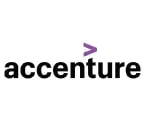

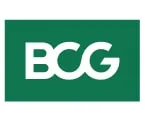
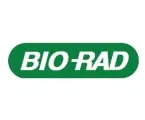
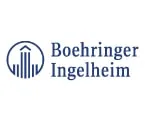
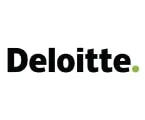
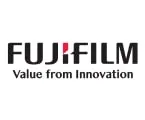

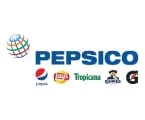
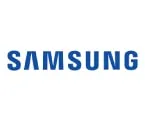


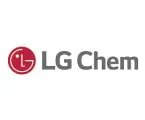
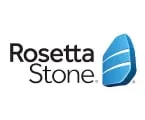
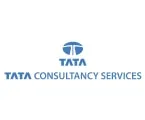
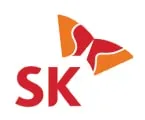
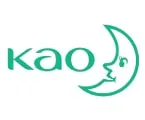

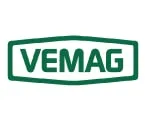
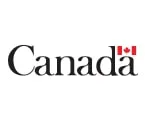
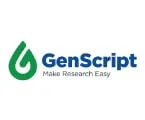
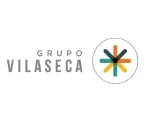
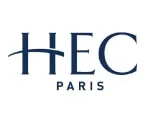
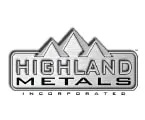
Published Date: Jul-2025
Published Date: Jul-2025
Published Date: Oct-2025
Published Date: Jul-2024
Please enter your corporate email id here to view sample report.
Subscribe to get the latest industry updates